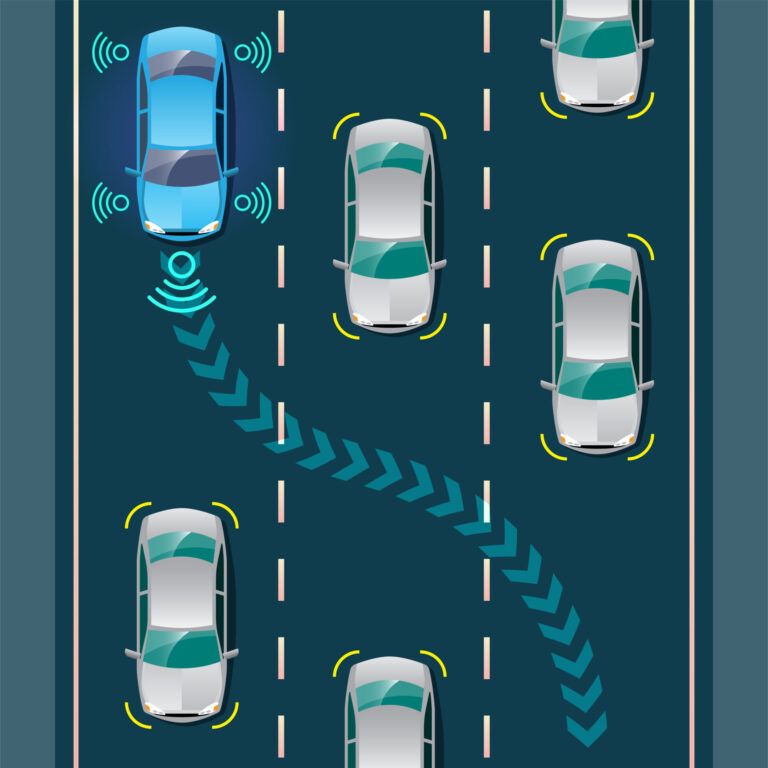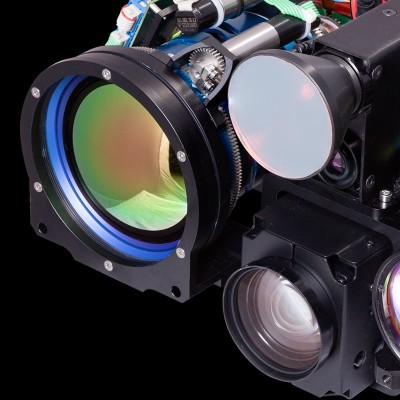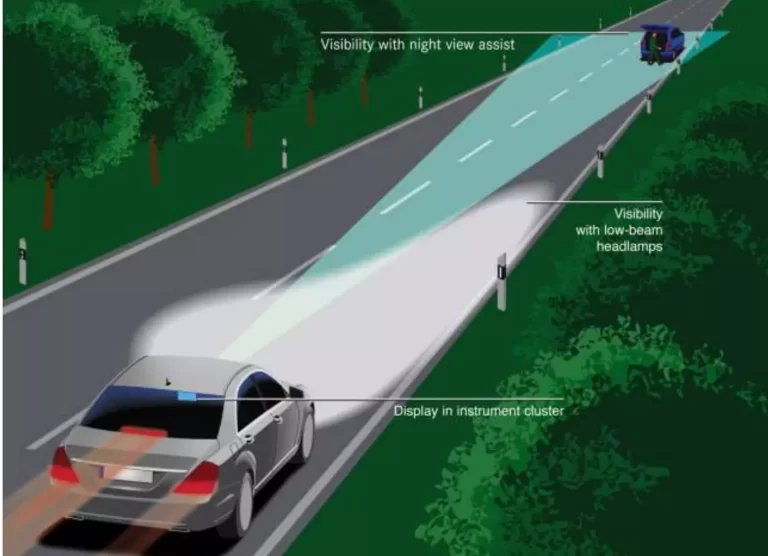Home / Synthetic Sapphire Use in Electric Vehicle Vision Systems
Synthetic Sapphire Use in Electric Vehicle Vision Systems
The Challenge
This paper explains the capability of synthetic sapphire in vision system applications. Synthetic sapphire is a highly valuable material in various vision system applications due to its exceptional properties. Sapphire is a form of crystalline aluminum oxide (Al2O3) and is produced in laboratories rather than being mined from natural sources. More specifically, this paper looks to expand on the potential of synthetic sapphire in the vision systems of self-driving electric vehicles. The EV’s, also known as autonomous vehicles or autonomous cars, typically rely on a combination of various types of cameras and sensors to perceive their environment and make driving decisions. These sensors work together to create a comprehensive view of the vehicle’s surroundings.
Understanding Synthetic Sapphire
Understanding the characteristics of synthetic sapphire is paramount in various industries and applications, from advanced optics to high-performance electronics. Synthetic sapphire, a crystalline form of aluminum oxide, exhibits a remarkable combination of properties that make it highly sought after, including exceptional hardness, optical clarity, resistance to abrasion, and thermal stability. This translucent material has found its way into a myriad of applications, ranging from precision optics and protective windows to semiconductor substrates and aerospace components. In this exploration, we delve into the distinctive characteristics of synthetic sapphire, shedding light on its uses, advantages, and the pivotal role it plays in enabling cutting-edge technologies across diverse sectors.
A comprehensive review of the various types of synthetic sapphire and properties can be found here.
Vision Systems in EV’s
Self-driving electric vehicles, also known as autonomous vehicles or autonomous cars, typically rely on a combination of various types of cameras and sensors to perceive their environment and make driving decisions. These sensors work together to create a comprehensive view of the vehicle’s surroundings. See figure #1 and figure #2.


The Solution
Here are the types of cameras commonly used in self-driving electric vehicles:
- Monocular Cameras: Monocular cameras, often referred to as simply “cameras,” are similar to the standard cameras found in smartphones and digital cameras. They capture 2D images and video frames of the vehicle’s surroundings. These cameras are used for tasks like lane detection, traffic sign recognition, and object detection.
- Stereo Cameras: Stereo cameras consist of two cameras placed at a fixed distance apart, simulating the way human eyes perceive depth. By comparing the disparities between corresponding points in the images from both cameras, stereo vision systems can create a 3D representation of the scene. This helps in depth perception and obstacle avoidance.
- 360-Degree Cameras: Some self-driving vehicles are equipped with a set of cameras that provide a 360-degree view of the vehicle’s surroundings. These cameras are typically positioned around the vehicle, covering blind spots and providing a holistic view to aid in parking, maneuvering, and object detection.
- Lidar (Light Detection and Ranging): Lidar sensors emit laser pulses and measure the time it takes for the laser beams to bounce back after hitting objects in the environment. This technology creates a detailed 3D point cloud map of the surroundings, enabling precise mapping, object detection, and obstacle avoidance.
- Radar: Radar sensors use radio waves to detect objects and determine their distance, speed, and direction of movement. Radar is effective in various weather conditions and is often used for long-range object detection, especially in highway driving scenarios.
- Ultrasonic Sensors: Ultrasonic sensors use sound waves to detect objects at close range. They are commonly used for parking assistance and low-speed maneuvering, helping the vehicle avoid collisions with nearby objects.
- Infrared Cameras: Infrared (IR) cameras capture thermal images of the environment, which can be useful for detecting heat signatures and distinguishing between living beings and inanimate objects. They are particularly useful in low-light or nighttime conditions. See figure #3
Synthetic sapphire uses in vision system applications for self-driving electric vehicles
Synthetic sapphire is used in vision systems and optical applications for several reasons, primarily because of its excellent optical properties, durability, and resistance to harsh environmental conditions. See figure #4


The Benefit
Here are some ways in which synthetic sapphire is used in vision systems:
- Camera Lenses: Sapphire is often used as a material for camera lenses and protective windows in vision systems. Its high transparency in the visible and near-infrared (NIR) spectra allows for clear imaging and sensing. Sapphire lenses are known for their exceptional clarity and scratch resistance, which is crucial for maintaining the optical quality of camera systems.
- Infrared (IR) and Thermal Imaging: Synthetic sapphire is transparent in the infrared region of the spectrum, making it suitable for IR and thermal imaging applications. It is used as a protective window for IR cameras and thermal imaging devices, allowing them to capture thermal signatures and detect temperature variations in objects and scenes.
- Sensors and Detectors: In vision systems, sensors and detectors often require protective covers or windows that allow them to operate accurately while shielding them from environmental factors. Sapphire is used to protect sensors and detectors in various industries, including industrial automation, aerospace, and automotive, ensuring reliable and long-lasting performance.
- Laser Optics: Sapphire is a popular choice for optical components in laser systems. It can be used as laser windows, beam splitters, and lenses in laser-based vision systems. Sapphire’s high melting point and thermal conductivity make it suitable for withstanding the intense energy produced by lasers.
- Machine Vision: Machine vision systems often employ sapphire lenses and windows to protect cameras and sensors in harsh industrial environments. Sapphire’s resistance to chemicals, abrasion, and high temperatures ensures the longevity of these components.
- Underwater Vision: Sapphire’s resistance to water and corrosion makes it an ideal material for underwater vision systems, such as remotely operated vehicles (ROVs) and underwater cameras. Sapphire windows can withstand the high-pressure conditions of deep-sea environments.
- UV and Harsh Environments: Sapphire is also used in applications where resistance to ultraviolet (UV) radiation and harsh chemicals is required. It can be used as protective windows in UV spectrometers, semiconductor manufacturing, and chemical analysis equipment.
- Security and Surveillance: Sapphire windows are used in security cameras and surveillance systems for their durability and optical clarity, ensuring that the cameras can operate effectively under various weather conditions.
- High-Resolution Cameras: High-resolution cameras, often combined with advanced image processing algorithms, are used for tasks requiring detailed object recognition and tracking. These cameras can identify pedestrians, cyclists, and other vehicles with high accuracy.
In summary, synthetic sapphire is valued in vision systems for its optical transparency, hardness, scratch resistance, and ability to withstand harsh environmental conditions. Its use in camera lenses, protective windows, and optical components contributes to the performance and reliability of various imaging and sensing technologies.
Self-driving electric vehicles rely on a fusion of data from these sensors to build a comprehensive understanding of their surroundings. Machine learning algorithms and computer vision techniques process this data to make driving decisions, such as lane-keeping, adaptive cruise control, automatic braking, and navigating complex traffic situations. The combination of these sensors allows autonomous vehicles to operate safely and efficiently in a wide range of driving conditions. Sapphire is an ideal choice for applications in certain components and systems of electric vehicles, mainly because of its exceptional properties such as hardness, scratch resistance, and thermal conductivity.
